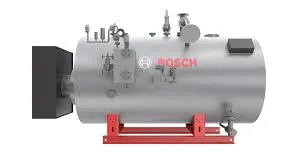
12월 . 22, 2024 15:20 Back to list
industrial steam system
Understanding Industrial Steam Systems
Industrial steam systems are crucial components in many manufacturing processes and operations, serving a myriad of applications across various industries. From power generation to heating, the efficient use of steam can significantly impact overall productivity, energy consumption, and environmental footprint. This article explores the fundamentals of industrial steam systems, their components, and best practices for optimizing their efficiency.
Overview of Steam Systems
A steam system consists of a network of equipment that generates, distributes, and utilizes steam. The primary components include boilers, steam pipes, heat exchangers, and end-use equipment such as turbines and process heaters. These systems are often employed in industries such as chemical manufacturing, food and beverage production, and textile processing, among others.
Steam Generation
The steam generation process begins with a boiler. Boilers can be classified into two main types fire-tube and water-tube boilers. Fire-tube boilers contain hot gases that pass through tubes submerged in water, heating the water to produce steam. In contrast, water-tube boilers circulate water through tubes heated by the combustion of fuel. The choice of boiler depends on various factors, including steam demand, fuel type, and operational efficiency.
Steam Distribution
Once generated, steam must be distributed to various points of use throughout the facility. This is accomplished through a network of insulated pipes designed to minimize heat loss. Proper insulation is critical, as even minor losses can lead to significantly increased energy costs. Moreover, steam distribution systems should be designed to minimize pressure drops, as higher pressure requirements can result in greater energy consumption.
Steam Utilization
The final stage of the steam system involves its utilization for various applications. Common uses include powering turbines for electricity generation, providing heat for industrial processes, and maintaining temperature and humidity control in manufacturing environments. The specific requirements for steam quality, pressure, and temperature can vary significantly depending on the application, making it essential to ensure that the steam delivered meets these parameters.
industrial steam system

Efficiency and Optimization
Improving the efficiency of industrial steam systems can yield substantial benefits, including reduced fuel costs and lower emissions. A critical aspect of achieving this is regular monitoring and maintenance of the system. Some key practices include
1. Condensate Return The return of condensate (the water produced when steam cools) back to the boiler is essential for maintaining efficiency. Condensate contains a significant amount of energy, and capturing it not only conserves water but also reduces the energy required to generate new steam.
2. Control Systems Implementing advanced control systems can help optimize the operation of steam systems. These systems can adjust steam flow rates, monitor temperature and pressure, and identify potential issues before they escalate into significant problems.
3. Regular Maintenance Routine inspections and maintenance of boilers, pipes, and valves are vital for ensuring optimal performance. This includes checking for leaks, corrosion, and scale buildup, which can all impede the efficiency of steam generation and distribution.
4. Energy Audits Conducting energy audits can help identify areas of waste and inefficiency within the steam system. An audit typically examines all aspects of the system, from steam generation to end-use processes, providing insights into potential improvements.
5. Training and Awareness Educating employees about the proper operation of steam systems can lead to more efficient practices. Awareness of energy-saving techniques and operational best practices can significantly impact overall system efficiency.
Conclusion
In conclusion, industrial steam systems play a vital role in various industrial processes, and their efficient operation is key to sustainability and cost management. By focusing on effective steam generation, distribution, and utilization, alongside regular maintenance and optimization measures, companies can enhance their energy efficiency and reduce their environmental impact. As industries strive towards greener operations, the importance of optimizing steam systems will continue to grow, making it imperative for businesses to adopt best practices in this area. The future of industrial operations depends on our ability to efficiently harness and utilize steam in a sustainable manner, ensuring both economic and environmental benefits for generations to come.
-
Efficient Biomass Fired Hot Water Boiler | AI Heating Solution
NewsAug.01,2025
-
High-Efficiency Gas Thermal Oil Boilers | HPT Models
NewsJul.31,2025
-
Oil Fired Hot Water Boilers Sale - High Efficiency & Affordable
NewsJul.31,2025
-
High-Efficiency Commercial Oil Fired Steam Boiler for Industry
NewsJul.30,2025
-
High-Efficiency Biomass Fired Thermal Oil Boiler Solutions
NewsJul.30,2025
-
High Efficiency Gas Fired Thermal Oil Boiler for Industrial Heating
NewsJul.29,2025
Related PRODUCTS






















